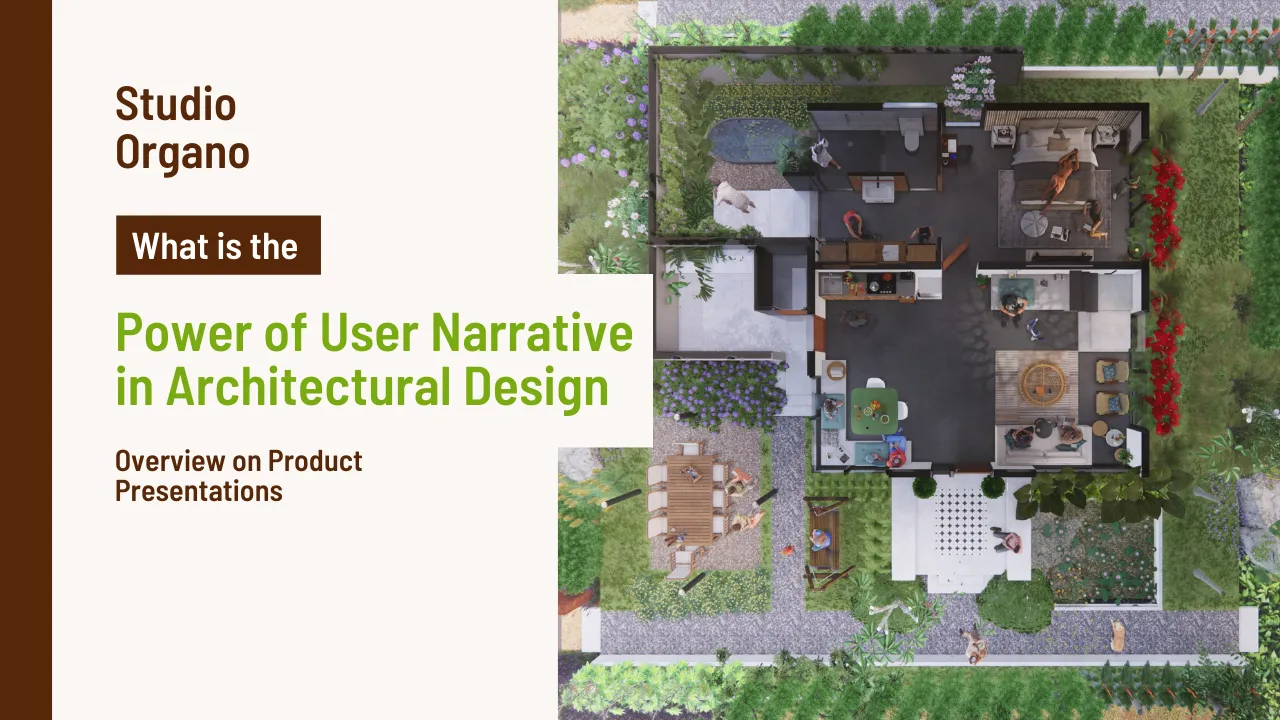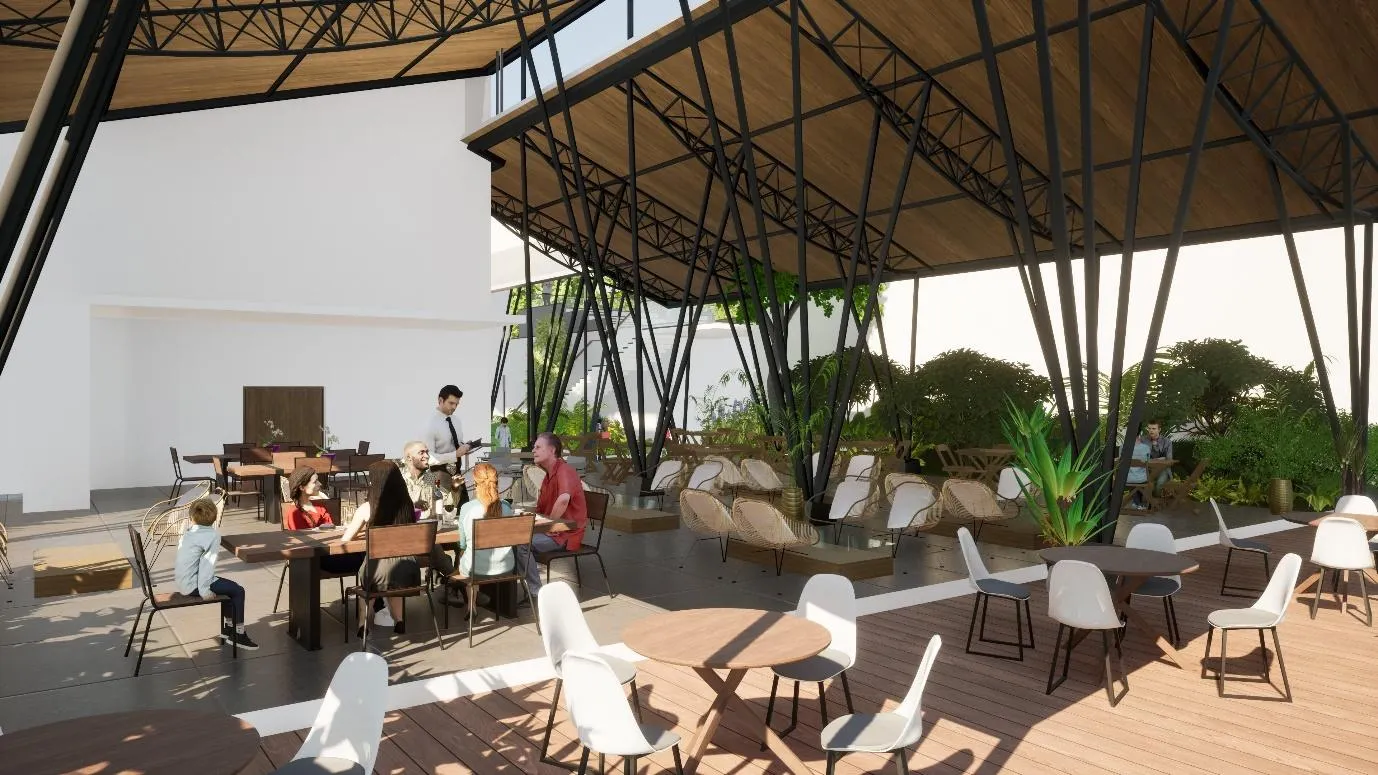 Contact us
Contact usIntent
Community
Studio Organo Concepts
About Us
Subsidaries
Studio Organo
TS RERA No.P02400003403.
TS RERA No.P02400003403.

Author:Chaithanya Ravilla, Architect - Product Design
At Studio Organo, we are focused on creating spaces that celebrate living, we are not just building structures; we are fostering environments where people thrive and enjoy life. This mission is deeply fulfilling. The user narrative is a powerful tool that allows us to articulate spaces that resonate with people on a profound level. By weaving together the architect's perspective with the user's needs, desires, and behaviors, we unlock the potential to craft transformative environments that go beyond aesthetics and functionality. We embrace the user narrative, we embark on a journey of empathy, creativity, and innovation—a journey that leads to spaces that truly touch the lives of those who inhabit them.
There are two places that we apply user narratives - 1) during home and neighborhood design, and 2) creating the product presentation. So, want to know what it takes to articulate an architectural blueprint into a living, breathing space that truly resonates with the people who inhabit it? Have a read below about embedding user narratives during design and during design presentations.
What are User Narratives in the context of Organo’s Product Design Process?
As architects, we are often consumed by the intricate dance of lines, forms, and structures that comprise our designs. We immerse ourselves in the technicalities, aesthetics, and spatial arrangements, striving to create visually appealing and innovative spaces. Yet, as we tread this creative journey, there's an essential aspect that we must not overlook: the "USER NARRATIVE."
Architectural design is not solely about erecting physical structures; it's about crafting environments that resonate with the people who inhabit them. This is where the user narrative comes into play. It is the rich tapestry of experiences, emotions, and behaviors that individuals bring to a space. Understanding and incorporating the user narrative alongside the architect's perspective elevates our designs from functional to transformative.
1. Bridging the Gap Between Vision and Reality: An architect envisions spaces with an expert eye, driven by artistic and technical prowess. However, without considering the user narrative, this vision may remain confined to blueprints. By embracing the user's perspective, architects can mold their designs to be more relatable and responsive. When users see their needs and preferences reflected in the design, a sense of ownership and connection is fostered.
2. Human-Centric Design: Architecture's essence lies in serving people. Buildings exist not for their own sake, but to enhance the lives of those within them. The user narrative provides insights into how spaces will be used, facilitating designs that accommodate various activities and functions. Whether it's at home level or a community level, a deep understanding of user needs ensures that spaces become extensions of their personalities and lifestyles. Creating user narratives allows us to place people at the center of our design process. This shift from abstract concepts to real individuals and their stories adds depth and meaning to our work.

3. Enhancing Functionality and Flow: User narratives shed light on movement patterns, interactions, and daily routines. This knowledge empowers architects to create layouts that maximize space utilization, minimize wastage and promote smooth transitions between spaces. A well-designed space transcends aesthetics; it harmoniously facilitates the coexistence of inhabitants with their surroundings, enriching the overall experience.

4.Enhanced Problem Solving: User narratives present challenges and constraints that require creative problem-solving. Overcoming these challenges and finding solutions that align with the user's needs can be intellectually stimulating and joyful.
5. Emotionally Resonant Design: Spaces have the power to evoke emotions, from tranquility in a park to inspiration in a museum. By integrating the user narrative, architects can channel these emotions intentionally. A workplace that fosters creativity, a healthcare facility that instills comfort, or a residence that exudes warmth—all are achievable when architects embed the desired emotional experiences into their designs. Immersing ourselves in the lives, needs, and aspirations of the users establishes a profound connection between us and the people who will inhabit our creations. This connection often leads to a deeper sense of purpose and satisfaction in our work.
6. Sustainability and Adaptability: User narratives also inform the lifecycle of a building. How will it evolve over time? Adapting to changing user needs and environmental considerations is key. When architects understand how a space will be used in the long run, they can design for flexibility, minimizing the need for major renovations and contributing to sustainable practices.
7. Fostering Engagement and Community: Architectural designs can create opportunities for social interaction and community building. By immersing themselves in user narratives, architects can create spaces that encourage gatherings, collaborations, and shared experiences. Such environments foster a sense of belonging, sparking connections among users.

8.Validation of Design Thinking: When we see that our designs resonate with users and enhance their quality of life, it validates our design thinking and choices, reinforcing our confidence and satisfaction in our work.

9.Measuring Success: One of the most fulfilling aspects of integrating user narratives into architectural design is the feedback loop it creates. Architects can observe how their designs impact the lives of those who inhabit them, leading to continuous improvement and refinement. This iterative process ensures that designs evolve to better serve the users, making their experiences richer and more rewarding.
10.Building Lasting Relationships: Working closely with users to understand their narratives often leads to meaningful client relationships. These relationships can be professionally and personally enriching.

Why and How we use narratives in Product Presentations
There's a crucial transformation happening in the way we present our designs. In crafting product presentations for homes and neighborhoods, we've shifted our focus from an architecture-centric approach to one that places the user narrative at the forefront. Our aim is to provide our end users with a truly immersive experience, where they don't just see physical spaces but envision the life they'll lead within them. These presentations are carefully woven with stories that mirror their aspirations and dreams, allowing them to connect on a profoundly personal level. Every slide, every image, every detail is thoughtfully curated to illustrate how these spaces will become an integral part of their unique journey. It's about offering them a glimpse into their future homes or neighborhoods, painting a vivid picture of the life they can create within these spaces. Our presentations are now more than just showcases; they are windows to a deeper understanding of what their home or neighborhood can truly mean to them.
We are a cross-functional and research-focused team of architects, engineers, and technical experts, who ideate, refine and detail eco habitat products, components, and solutions. Our core intent is to co-create and manifest apt rurban lifestyles across all eco-habitat components to celebrate the living for respective user groups. From earth-friendly neighborhoods to home interiors, we’ve got it all covered.
Instagram: https://www.instagram.com/studioorgano/
Website: https://www.organo.co.in/studio-organo
If you’d like to know about our design explorations or if you would like to be part of our user research as we refine the design, please email us at studio@organo.co.in